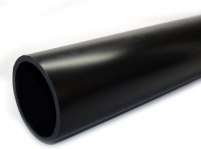Menu


Welcome to the fascinating world of telescopes! Telescopes are an impressive yet simple piece of technology. In this article, we will take you on a journey through the history of telescopes and equip you with the knowledge to build your telescope at home. Whether you’re an astronomy enthusiast or a curious beginner, this guide will empower you to explore the wonders of the universe from the comfort of your backyard. Let’s dive in!
The invention of the telescope has transformed our understanding of the universe. From ancient civilizations using lenses for magnification to Galileo Galilei’s groundbreaking celestial observations, the early uses of the telescope laid the foundation for astronomical advancements. Sir Isaac Newton’s revolutionary reflector design and the contributions of astronomers like Johannes Kepler and William Herschel further propelled the development of telescopes.
In the realm of modern telescopes, several notable instruments have revolutionized our exploration of the cosmos. With its exceptional capabilities and achievements in deep space observations, the Hubble Space Telescope has provided stunning images of distant galaxies and nebulae. Launched on December 25, 2021, the James Webb Space Telescope is an infrared observatory that will complement the Hubble Space Telescope. Ground-based telescopes like the Keck Observatory, boasting large mirrors, and the Very Large Telescope (VLT) in Chile, renowned for its exceptional resolution, have significantly contributed to astronomical research. The Chandra X-ray Observatory, a space telescope designed for X-ray astronomy, has allowed us to study the high-energy universe in unprecedented detail.
Building your own telescope is an exciting and rewarding endeavor. It enables you to customize the design according to your preferences and learn firsthand about the optics involved. Here, we will guide you through assembling your homemade telescope, ensuring a successful and enjoyable journey into stargazing.
Telescope Tube: Construct a sturdy and lightweight tube to house the optics. PVC pipes or other suitable materials can be used for this purpose.
Objective Lens/Mirror: The objective is the primary optical element gathering light. You can purchase a quality objective lens or mirror from telescope supply stores or repurpose optics from binoculars or camera lenses.

Eyepiece: The eyepiece magnifies the image formed by the objective, allowing you to observe celestial objects in greater detail. Choose an eyepiece with an appropriate focal length and field of view for your telescope. Keep in mind you can get both the eyepiece and the focuser together even though we have them listed separately. 
Focuser: The focuser enables precise adjustments to achieve sharp focus. It allows you to fine-tune the position of the eyepiece for optimal viewing.
Mounting Hardware: Depending on your desired setup, you will need a tripod, alt-azimuth, or equatorial mount to stabilize your telescope.
Tools: Gather basic tools such as screwdrivers, wrenches, adhesives, and measuring instruments to aid the assembly process.
Now that you understand telescope optics and have gathered all the necessary materials let’s move on to the step-by-step assembly process.
Step-by-Step Assembly Guide:
Building your homemade telescope involves several detailed steps to ensure proper alignment and functionality. Follow these instructions carefully:
Step 1: Constructing the Telescope Tube:
Step 2: Mounting the Objective Lens/Mirror:
Step 3: Installing the Eyepiece and Focuser:
Step 4: Aligning and Adjusting the Optics:
Step 5: Testing and Fine-Tuning:
Congratulations on successfully assembling your homemade telescope! With your telescope ready, the possibilities for exploration are endless. Use it to embark on mesmerizing stargazing sessions, observe the intricate details of neighboring planets, explore the lunar landscape, and even delve into astrophotography. So enjoy the journey as you uncover the universe’s wonders from your backyard.